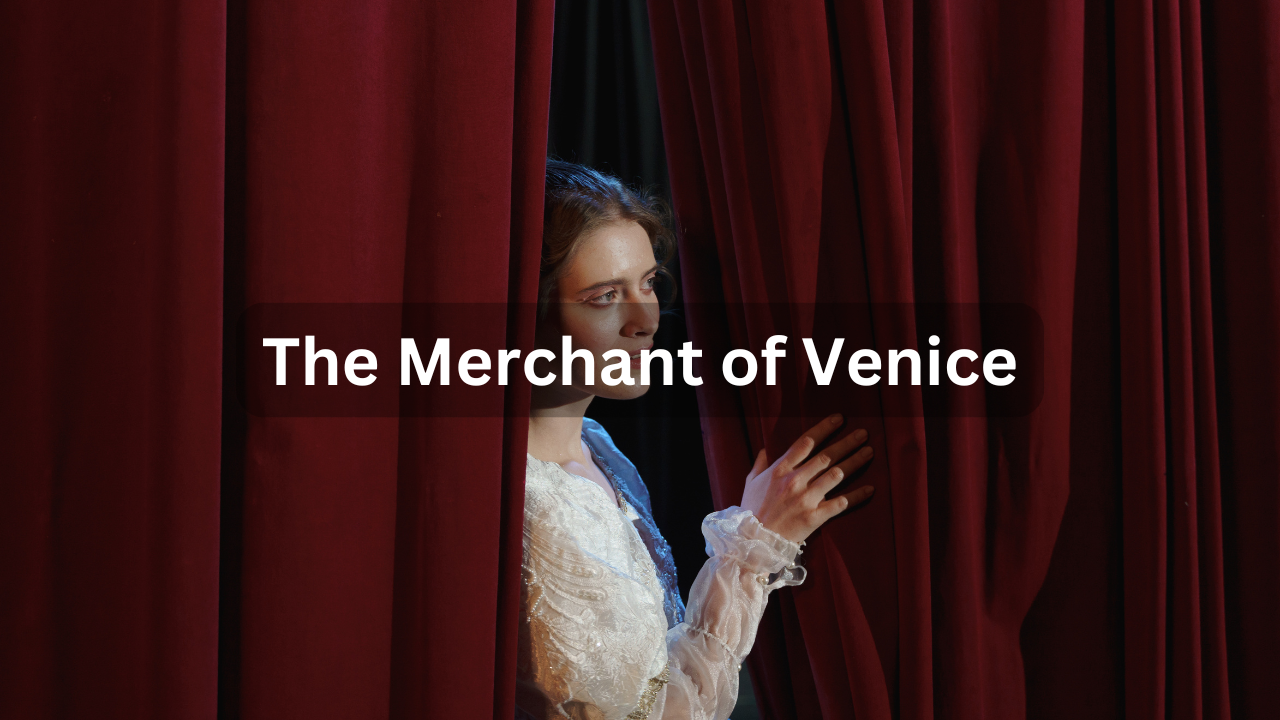If Shakespeare were alive today, The Merchant of Venice would probably be a Netflix hit—part romantic comedy, part legal drama, and part social commentary, all wrapped up in witty banter and a little controversy. Written around 1596, this play blends humor, romance, and razor-sharp tension, making it one of Shakespeare’s most complex works.
So, whether you’re a fan of romantic antics or courtroom showdowns, here’s everything you need to know about The Merchant of Venice.
The Plot: Love, Loans, and a Legal Battle
Act 1: A Risky Loan
We start in Venice, where Antonio, the titular merchant, is feeling a little emo for reasons he doesn’t quite understand. His friend Bassanio is in love with the wealthy and beautiful Portia but lacks the funds to woo her in style. Enter Antonio, who agrees to help by taking out a loan from the moneylender Shylock.
Shylock, who has a bitter history with Antonio, agrees—but there’s a catch. If Antonio doesn’t repay the loan on time, Shylock demands a pound of Antonio’s flesh. Gross? Yes. Significant? Absolutely.
Act 2: Portia’s Bachelor Auction
Meanwhile, over in Belmont, Portia is stuck in a bizarre matchmaking game created by her late father. Suitors must choose from three caskets—gold, silver, and lead. Only the correct choice wins her hand in marriage.
After some dramatic misfires (including a hilariously arrogant Prince of Morocco), Bassanio shows up, picks the lead casket, and wins Portia’s heart. Yay!
Act 3: Trouble Brews
Back in Venice, Antonio’s ships (and his fortunes) hit a rough patch, leaving him unable to repay Shylock. Shylock, fueled by years of mistreatment and Antonio’s insults, is out for revenge. He’s determined to claim his pound of flesh, legal or not.
Portia, now Bassanio’s wife, hears about Antonio’s predicament and decides to step in—but not before Bassanio rushes back to Venice, leaving their honeymoon in the dust.
Act 4: The Courtroom Showdown
This is the play’s most famous scene, where things get seriously intense. In the Venetian court, Shylock demands his pound of flesh, but Portia shows up disguised as a male lawyer, turning the trial into a dramatic battle of wits.
Portia finds a loophole in the contract: Shylock can take his pound of flesh, but if he spills a single drop of Antonio’s blood, he’ll be breaking Venetian law. Shylock, realizing the impossibility of his claim, is forced to give up his money and convert to Christianity.
While Antonio is saved, the resolution raises questions about justice, mercy, and prejudice that still spark debates today.
Act 5: Back to Belmont
The play ends on a lighter note in Belmont, where everyone reunites. Bassanio and Portia share some playful banter about the rings they exchanged, and Antonio receives news that his ships weren’t lost after all. It’s a happy(ish) ending—depending on how you feel about Shylock’s fate.
Key Themes in The Merchant of Venice
1. Mercy vs. Justice
The courtroom scene pits mercy (Portia’s plea) against justice (Shylock’s demand). Shakespeare leaves us pondering whether true justice can ever exist without compassion—or whether mercy is just another form of power.
2. Prejudice and Otherness
Shylock’s character is a lightning rod for discussions about antisemitism and the treatment of outsiders. While he’s painted as a villain, he’s also one of Shakespeare’s most complex characters, making us question how society creates its own enemies.
3. Wealth and Loyalty
Money drives much of the plot—from Bassanio’s quest to marry Portia to Shylock’s bitter demand for payment. But beneath the surface, Shakespeare asks: what’s more valuable—money or human relationships?
Why The Merchant of Venice Still Matters
Even centuries after it was written, The Merchant of Venice resonates because of its timeless themes. It tackles big questions about justice, love, and prejudice that are as relevant today as they were in the 16th century.
Plus, who doesn’t love a story with romance, high-stakes drama, and a touch of courtroom theatrics? It’s Shakespeare at his most multifaceted, blending humor and heartbreak in a way only he can.
Fun Facts About The Merchant of Venice
- Shylock’s Humanity: While Shylock is often portrayed as a villain, his famous speech—“Hath not a Jew eyes?”—is one of the most empathetic moments in Shakespeare’s works, challenging the audience’s biases.
- A Rare Happy Ending (Sort Of): Unlike many of Shakespeare’s tragedies, this play ends with marriages and good news, though it’s bittersweet for Shylock.
- A Casket Quiz: Portia’s suitors guessing which casket holds her portrait might be one of the first examples of a love test in literature.
Conclusion: A Play That’s as Rich as Its Themes
The Merchant of Venice is more than just a story about loans and love; it’s a deep dive into the messy complexities of human relationships. Whether you’re rooting for Portia’s brilliance, questioning Shylock’s treatment, or just enjoying the drama, this play has something for everyone.
As Portia herself says: “The quality of mercy is not strained.” But with all the twists and turns in this play, mercy is in short supply—making it an unforgettable ride through Shakespeare’s world.

I likewise think hence, perfectly written post! .